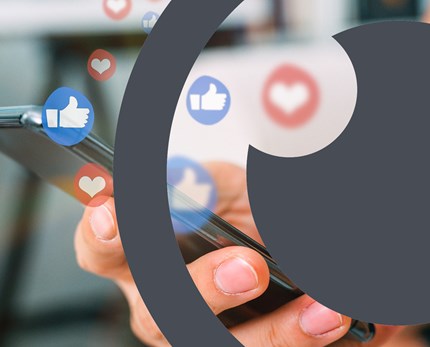Are marketers slave to the algorithm?

- 04 September 2020
Companies are increasingly reliant on computers to do the heavy lifting and the benefits are clear, but brands must make sure that they have every angle covered.
It can’t have escaped the notice of those observing the UK’s education system that an attempt by the authorities to find a way of assessing and approximating exam grades impacted by coronavirus…did not go all that well come results day last month.
The reasons why that was remain as opaque to most of us as the algorithm that created the grades in the first place. But the outcome was very clear. There were many disappointed students, several of whom had been clearly very unfairly treated by the process, as well as a distinct lack of trust in both the people in charge of UK education and the science behind automated decisioning.
Even pre-coronavirus, this has been the algorithm’s moment. Behind everything from fun app filters, online ad targeting, credit scoring and insurance loss adjusting, algorithms are allowing automation and augmentation and – theoretically – improved customer experience on a colossal scale.
In many cases this is hugely beneficial. It is allowing customer service teams to focus on complex cases, while speeding through straightforward ones and elevating customer experience. Algorithms are also helping designers push the bounds of creativity, building virtual worlds and even virtual humans for all sorts of purposes.
Algorithms are behind one of the world’s most popular influencers, for example. No, they’re not giving her insight into the most effective audiences to target, or helping create interesting Snapchat filters. They literally ARE her – Lil Miquela has 2.7m followers on Instagram, models clothes and conducts interviews – and she’s entirely computer generated. She even got into an online spat with another AI Influencer called Bermuda.
Increasingly, we’re welcoming the use of avatars into everyday interactions. Chatbots may use friendly cartoons to highlight the fact that the other end of the conversation is very definitely not a person, but simulated humanity is making its way into the mainstream. David Beckham was recently seen in a campaign for malaria charity, Malaria Must End, speaking nine languages as if they were his native tongue. This was all achieved through simulation.
It’s a charity, and it’s David Beckham – consumers have a high degree of trust in both of these things and so this fakery is acceptable. But brands will have to tread carefully when engaging with these technologies. There is a rush to target new audiences in new ways and on new platforms, but brands can’t afford to leave their due diligence at the door.
In Issue 3 2020 of Catalyst, Mighty Social’s CEO, Joel Davis, explained how the social media platforms that are exploding beyond Facebook and Twitter’s middle ground demand a new approach:
“Immersive experiences are now defining the future of brands, and the recent world disruptions have highlighted people’s craving for meaningful interactions in highly relevant, contextual environments,” he wrote.
If those environments or interactions don’t exist naturally, there’s nothing to say they can’t be created out of thin air. After all, gamers have been enjoying virtual worlds for years. But everyday life is not fantasy. There are elements of trust, accuracy and authenticity that have to be tangled with and it’s not yet clear that these questions have been thoroughly answered.
Discover the new breed of social networks making an impact with marketers in the full article from Joel Davis in Catalyst issue 3 | 2020, available to CIM members now. 

Tags:
- 0 views

 FAQs
FAQs
 Log in
Log in
 MyCIM
MyCIM





